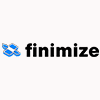So, what is a trendline?
A trendline is an illustrated line connecting changing key points in a graph, to indicate patterns of directional change. Trendlines visually represent support and resistance in any timeframe by showing direction, pattern and price contraction.
The ability to identify and draw trendlines is one of the most useful tools in technical analysis. While it may seem complicated, a simpler way to understand trendlines is to think of them as lines that connect two or more high/low points that extend into the future.
What are the different types of trendlines?
There are three main types of trendlines: uptrends, downtrends and sideways trends. All three can help determine if there’s a trading opportunity.
Uptrend (higher lows):
An uptrend shows price movement of a financial asset when there’s an upward direction. For the trendline to qualify as an uptrend, there needs to be a visual and continuous upward trend in each peak and trough. Uptrends are the opposite of downtrends and consist of upwards patterns that can be broken if the next low on the chart falls below the previous one.
Uptrends provide opportunities for investors to profit from a trading opportunity until the high-trend peaks are broken. Moving averages can also be used to find uptrends where traders can look for the price that is trading above the moving average.
Rising prices will appear bullish and show a strong determination. When prices remain above the trendline, the uptrend is solid.
Downtrend (lower highs):
A downtrend occurs when there’s a downward pattern - when assets move lower over a certain period. Downtrends can sometimes look like they’re starting to peak but are unmistakeably characterised by lower peaks and lower troughs consistent over time.
A downtrend consists of two types of price waves: impulse and correction waves.
Sideways trends (ranging):
A sideways trend occurs when the result of a price travels between strong levels of support and strong levels of resistance. Sideways trends can sometimes be referred to as horizontal trends, as they appear as horizontal trends that dominate the price action of a specific asset for a prolonged period before changing.
How to use trendlines in forex trading
If drawn correctly, trendlines in forex trading can be as accurate as any other method. However, using them in trading means knowing how to draw them correctly. There are many misconceptions about how to draw trendlines, and some traders try to make the line fit the market, instead of the market fitting the trendline.
Drawing trendlines has some rules to it, it’s important to draw a line connecting two or more peaks/valleys, whether high or low. Peaks and valleys refer to highs and lows created with zig-zagging prices. Below we show an example of how to draw unbroken trendlines.
The best way to use trendlines in forex trading is to look at the extended lines and trade on prices based on the trendline projections.
Incorrect use of trendline



































































